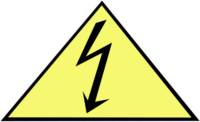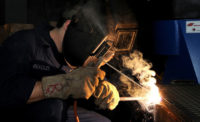What you should know about welding respiratory hazards

Credit: Getty Images
Welding processes release harmful fumes made up of solid particles that are formed when the vaporized metal condenses and oxidizes. These particles travel to and become accumulated in the gas-exchange region of the lungs, where it can produce a range of adverse effects. Canada Occupational Health and Safety Regulations (COHRS) requires that employees be limited from exposure to a concentration of an airborne chemical agent beyond the contaminant’s threshold value as established by the American Conference of Governmental Industrial Hygienist (ACGIH®).
Respiratory hazards should be assessed based on factors such as the amount of each substance produced, if each has similar toxicological effects, as well as their collective effect.
Factors that determine the level of fumes produced and the exposure period to workers include the type of process, current/voltage, and arc time.
Zinc oxide, magnesium oxide, copper, and aluminum fumes can cause metal fume fever. Similar to symptoms of influenza, individuals experience muscle aches and pains, increased body temperature, chills, nausea, and dizziness. Depending on the type of fume inhaled, symptoms may disappear within a few days in acute cases but can potentially result in death, or more serious illnesses (e.g. emphysema, pulmonary fibrosis, lung cancer, etc.) in chronic cases.
Certain types of welding fumes are known for causing occupational asthma (OA), which causes coughing, wheezing, and shortness of breath. Symptoms generally improve with time away from arc welding. Of more serious concern are the changes to welders’ lung functions due to long-term and/or heavy exposure to welding fumes. Many experienced decreased forced expiratory volume in one second and increased specific airway resistance, similar to changes seen in long-term smokers. These effects were seen in welders even with concentration of airborne chemical agents well below their threshold limit values.
Source: Enceladus http://enceladusimaging.com/welding-safety-2/
Looking for a reprint of this article?
From high-res PDFs to custom plaques, order your copy today!






